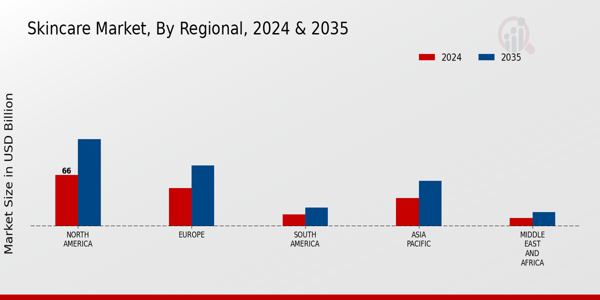Market Growth Projections
The Global Global Skincare Market Industry is poised for substantial growth, with projections indicating a market value of 176.2 USD Billion in 2024 and an anticipated increase to 290 USD Billion by 2035. This growth trajectory suggests a compound annual growth rate (CAGR) of 4.63% from 2025 to 2035. Various factors contribute to this optimistic outlook, including rising consumer awareness, the demand for natural ingredients, and the influence of e-commerce. As brands adapt to these trends and invest in innovation, the market is likely to witness a dynamic evolution, reflecting changing consumer preferences and behaviors.
Growth of E-commerce Platforms
The expansion of e-commerce platforms is reshaping the Global Global Skincare Market Industry, providing consumers with unprecedented access to a wide range of products. Online shopping offers convenience and often better pricing, which appeals to a broader demographic. In 2024, the market is anticipated to reach 176.2 USD Billion, partly due to the surge in online sales channels. Brands are increasingly investing in digital marketing strategies to enhance their online presence, catering to the growing number of consumers who prefer shopping online. This trend is likely to continue, as e-commerce is projected to be a key driver of market growth.
Rising Demand for Natural Ingredients
The Global Global Skincare Market Industry is experiencing a notable shift towards natural and organic ingredients. Consumers are increasingly aware of the potential harmful effects of synthetic chemicals, leading to a growing preference for products that contain botanical extracts and natural oils. This trend is reflected in the market's projected value of 176.2 USD Billion in 2024, as brands adapt to consumer preferences by reformulating products to include more natural components. The demand for transparency in ingredient sourcing further drives this trend, as consumers seek brands that prioritize sustainability and ethical practices.
Emerging Markets and Demographic Shifts
Emerging markets are becoming increasingly vital to the Global Global Skincare Market Industry, driven by rising disposable incomes and changing demographics. As urbanization continues, more consumers in these regions are gaining access to skincare products, leading to a surge in demand. The market's growth is further supported by a younger population that is more inclined to invest in skincare. This demographic shift is expected to play a crucial role in reaching the projected market value of 290 USD Billion by 2035. Brands are likely to tailor their offerings to cater to the unique preferences and needs of consumers in these emerging markets.
Increasing Awareness of Skincare Benefits
Awareness regarding the importance of skincare is on the rise, significantly influencing the Global Global Skincare Market Industry. Educational campaigns and social media platforms have played a pivotal role in disseminating information about skincare routines and the benefits of various products. This heightened awareness is expected to contribute to the market's growth, with projections indicating a value of 290 USD Billion by 2035. As consumers become more knowledgeable about skincare, they are likely to invest in high-quality products, thereby driving demand across various segments, including anti-aging and moisturizing products.
Influence of Social Media and Beauty Influencers
Social media platforms and beauty influencers are significantly impacting consumer purchasing behavior within the Global Global Skincare Market Industry. Influencers often showcase skincare routines and product reviews, which can lead to rapid increases in brand visibility and sales. This phenomenon is particularly pronounced among younger consumers who rely on social media for product recommendations. As the market evolves, brands are likely to collaborate with influencers to enhance their reach and credibility. This trend is expected to contribute to the market's projected CAGR of 4.63% from 2025 to 2035, reflecting the growing importance of digital marketing strategies.
























Leave a Comment